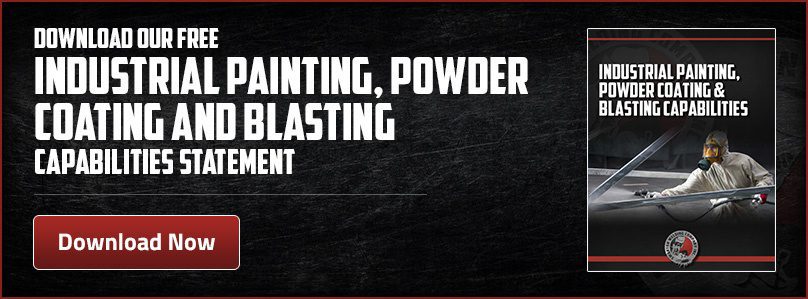The Science Behind Painting

Paint is the most commonly used material to protect steel and other metals. This is mainly done for two reasons; appearance and corrosion prevention. Why would you want your huge financial investment to look bad and just rust away?
What is Paint?
Paint can be defined as a fluid material which, when spread over surface in the form of a thin layer, will form a solid, adherent and cohesive opaque film. Paint can also be used in powder form. This is generally used for industrial and often referred to as powder coating.
The paint consists of four major ingredients: Pigment, binder or film former, and solvent or thinner, and the relative proportions of these ingredients can be varied to produce films with any desired physical and application characteristics.

Paint to Reduce Corrosion
Metals draw oxygen to their surface, which creates an oxide film. All metals oxidize to varying degrees. Water speeds up this process. This means your structural steel that is exposed to the elements is at risk. The iron in the steel is oxidized to produce rust, which occupies approximately six times the volume of the original material consumed in the process.
That rust flakes away, exposing fresh metal underneath and will then oxidize. Unless that steel is protected, it will eventually rust away completely. Painting will significantly slow down this process.
Other metals do not corrode in the same way structural steel does, but they will be affected by oxidation. Brass and aluminum lose their luster as they begin to oxidize. This leaves you with an extremely dull surface. Copper will begin to look red or pink as it begins to oxidize.
Over time, oxidation may give copper a dull green look. Stainless steel contains enough chromium that oxidation actually forms a protective coating on the surface. This layer prevents further corrosion by blocking oxygen diffusion to the steel surface and stops corrosion from spreading into the bulk of the metal.
Preparation & Application

Adequate surface preparation is necessary to make sure your paint or other coating adheres to your surface. Mill scale, dirt, laser scale, rust, heat-treat scale, grease, and dust interfere with paint and coatings’ adhesion to structural steel and must be removed before steel members can be coated.
Cleaning can be done with chemicals or abrading or bead-blasting the surface. Using a rust-inhibiting primer will also need to be used. Applying paint directly to unprepared areas can mean that the paint topcoat has nothing to successfully adhere to.
Primers and topcoats can be applied by brush, roller, spraying or dipping. Spraying is the most common method used in order to cover large surfaces quickly. It also tends to produce thicker coatings, making it more productive.
However, brushing may be used in addition to spraying to reach tight spots and cover welds.
The success or failure of any coating is influenced by the following factors:
- Structure condition
- Surface preparation and method of application
- Environmental condition at which the paint is applied and expected to withstand during service
- The quality of paint used
Let Swanton Welding help guide you in the proper coating for your project. Click on the “Get A Quote” button for a free quote on your next project or call us today at 419-826-4816.

